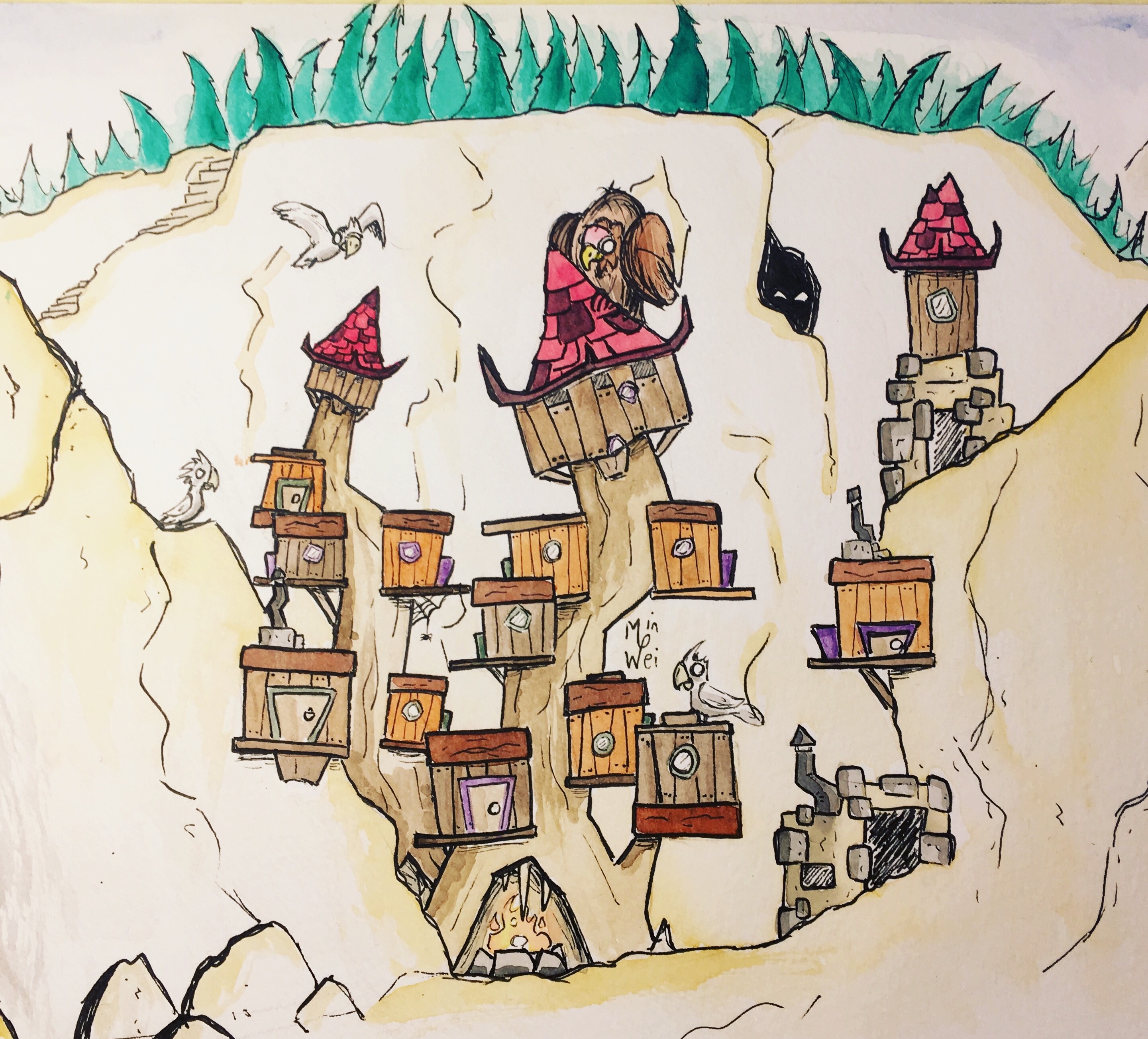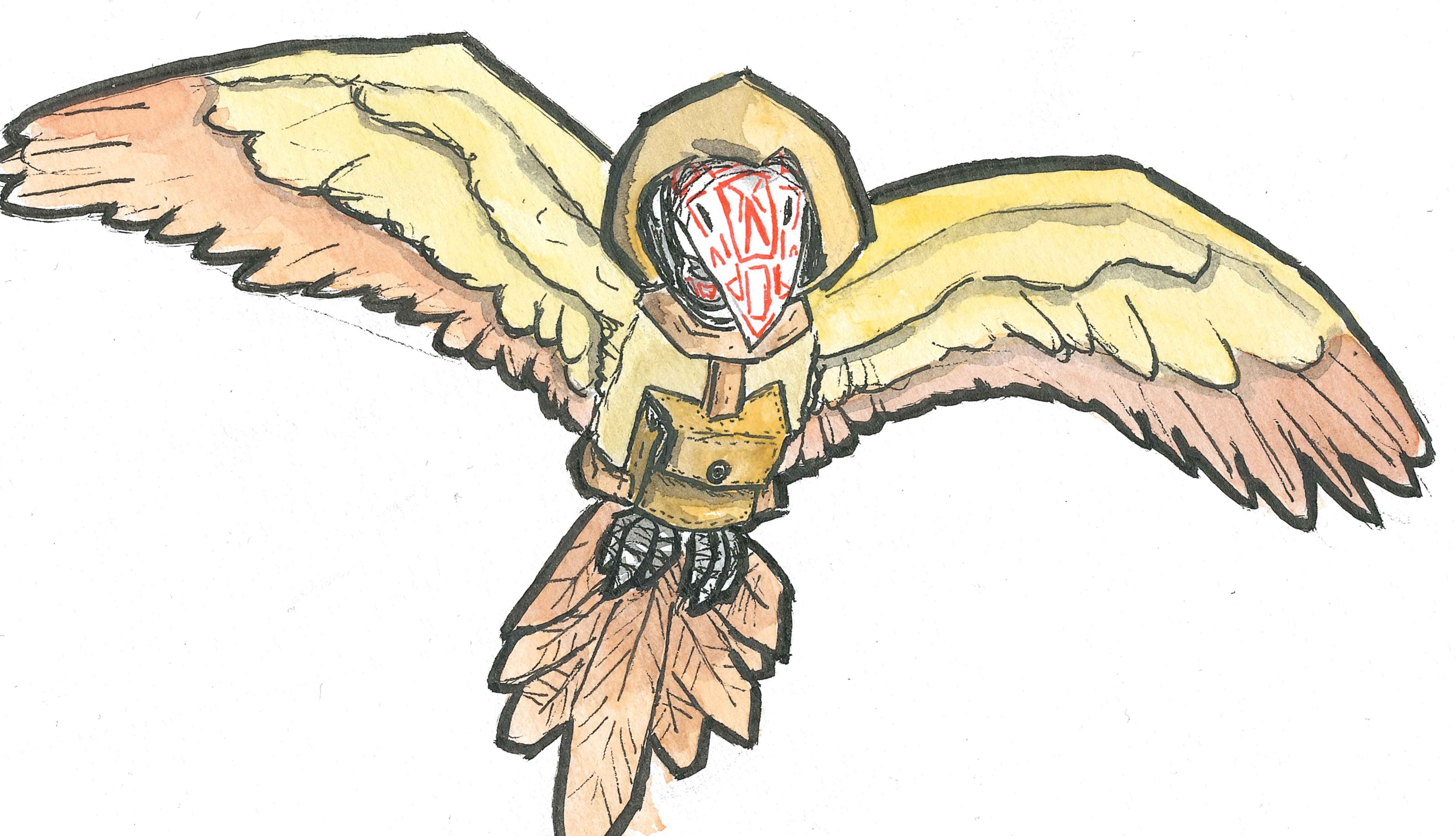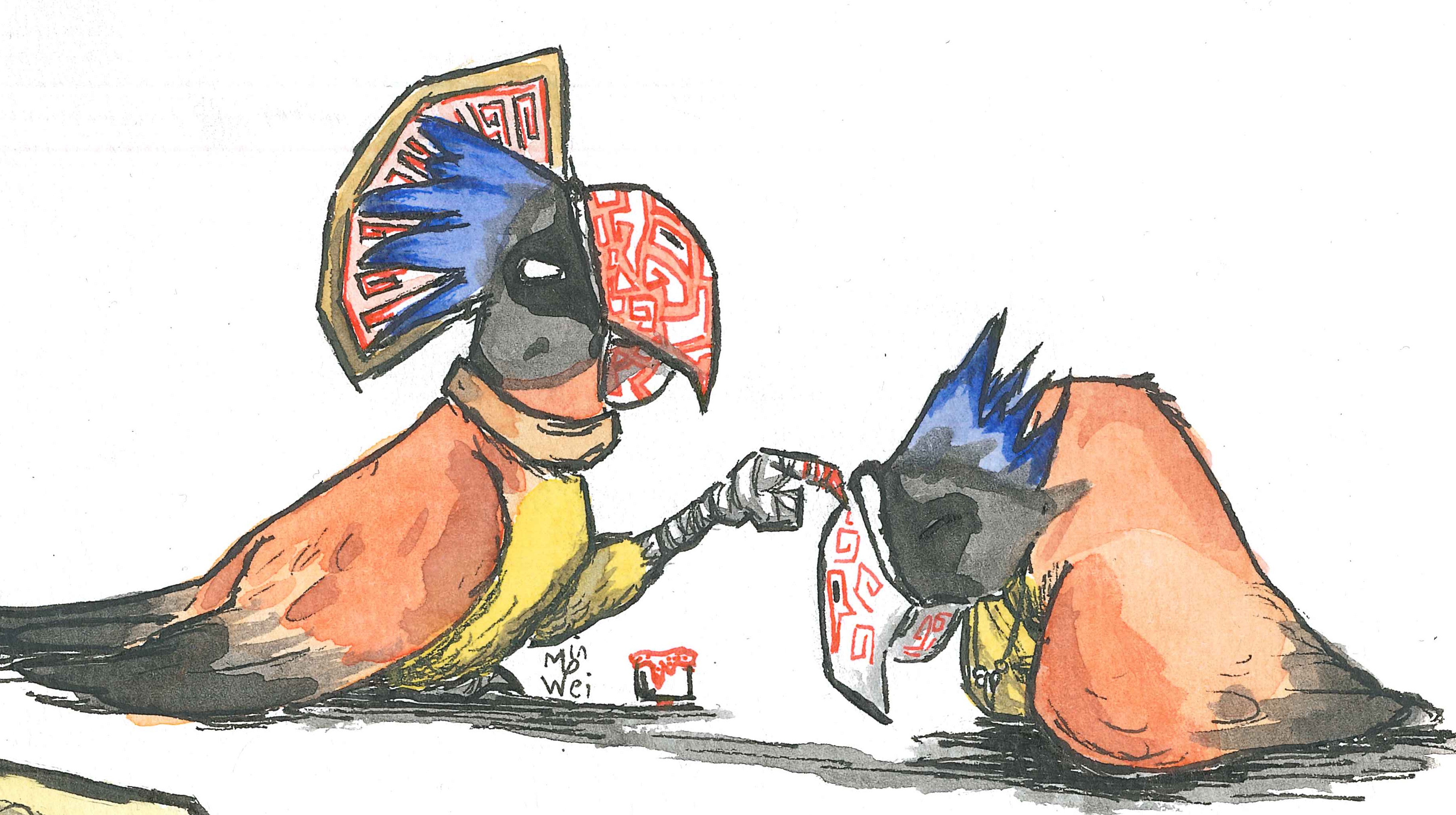Bird cultures: a description
The following document is a student's essay on anthropology. According to the side's data, the student got a medium grade for their work
Introduction
Even more numerous than Hominis, Birdkin are sophonts in the Cylinder. As a result of their extension, they present a particularly large cultural diversity. To what extent are the Birdkin cultural heritages related to one another and to the species' biology and origin? This article is the result of the compilation of information gathered across the Cylinder over the course of twenty-eight expeditions conducted by membersof the Great Library. Its objectives are double: To present the common denominators of the various birdkins cultures, and to study bird societies extensively, from the reproductive aspects and the family unit up to large tribes, regional kingdoms, and social classes.Primary social dynamics
In the first part of our essay, we will present the reproductive habits and the development stages of Birdkins, so as to link these reproductive habits to their classical family structures.Elements of biology
First of all, it was noted that although they are apparently able to differenciate each other between "layers" and "nesters", there is no visual sexual dimorphism nor gender role among Birdkins. In addition, they often form strongly bonded couples for years if not life. Although a majority of couples appear to involve members of opposite sexes, this is not a norm and many couples form between members of the same sex. When it comes to reproduction, it seems that Birdkins do not have any particular mating season, but rather have cyclical periods of fertility, one cycle usually lasting roughly 15 days. A few days after mating in the fertile period, a single egg is generally produced. The egg hatches after thirty to thirty-five days of nesting, a period during which the owners of the eggs take turns in protecting the egg and working. Although no investigator was authorized to lay a hand on unhatched eggs, some Birdkins reluctantly agreed to show shell fragments of eggs that had just hatched. The shells appear to fit in the palm, and very light blue - tinted. What is more, it was observed that couples unable to lay eggs can fairly easily obtain eggs from other couples. After hatching, fledglings are very dependent on their parents for the first year of their life. During that period, a hatchling is constantly taken care of by one of its parents, while the other is working. The young birds usually start talking half a year after they hatched, though this is not systematically the case. Depending on the culture, they learn to fly between age one and two, age at which the birds are roughly the same size as adults. They will however continue their intellectual development for more than one and a half decade. Finally, adult birds lose their down and are sexually mature at age twelve to fifteen, although they rarely mate before age twenty.Egg line and soul line
Once they know how to fly, young Birdkins start getting an education. In [tooltip:You feel uneasy at the word, that feels full of imperialism.]feral cultures[tooltip], the bird often have a coming of age ritual of some sort, during which they prove to the group they are old enough to fly on their own. From that point, the birds are not necessarily taken care of by the couple that nested them. Investigators have reported that almost every culture they managed to approach was presenting a double system of genealogy: the egg line is a bird's biological ascendance, and is seen as less important than the soul line, which represent the bird's cultural ancestry : the birds that accompanied it during its psychological development. While it is not biological, a bird's soul line is often seen as more important, and plays a role much closer to a human family unit than the bird's eggline does. When considering a Birdkin's ancestry, some specific vocabulary is to be used. A bird's Raiser is the main educating figure. It is the Birdkin that housed and took care of a bird until it reached adulthood. Since Birdkins usually live in couples, one generally is the soul child of two Raisers. Brothers or Siblings are Birdkins that grew up with the same Raisers. Although the distinction is not systematic, birds often call themselves Siblings when they are of a close age and shared some time in their raiser's time, and call themselves Brothers otherwise. To the same extent, it is possible for a bird to call piblings its raiser's siblings, and to call cousins its piblings' soul children.Family Units and kin
In this section, we gathered the several family bonds that exist among Birdkins, as well as some of their roles in several cultures. So as to correctly describe these roles, we will have to create a separation between City Birds, that is to say Birdkins living either in large human cities, in large independent Birdkin cities, or in close relation with human groups; and the Wild Birdkins, who live in the wilderness and actively avoid contact with Hominis. However, we are aware that this model does not entirely describe the reality. Our investigators showed several times that this cultural separation is a only simplified model, and that it is possible to form bonds with isolated tribes, or to observe trading fluxes between feral and city birds.The Birdkin family sphere
The very first social structure that can be observed among Birdkins is the couple, that defines both the size of habitations, and the friendship relations between individuals. Although couples aren't systematically lifelong, members of a couple are generally almost considered two sides of the same individual. The soul ancestry of the two birds fuse, they share friendships, and property. Once the notion of bird couples is established, the family unit can be extended. As mentioned in the first section, the Birdkins generally attach more importance to one's soul line, that is to say its cultural ancestry, than its eggline, that is to say its biological ancestry. Therefore, one's family is considered not to be its biological family, but the group of birds that deeply cared for and participated to one's cultural and psychological development. During our investigations, it has been observed that eggline and soul line tend to overlap in small communities. In these cases, the bird's biological parents are the one taking care of and accommodating the young bird. However, most of its education is conducted by one elder, either being the local Shaman, or some bird having the rank of spiritual teacher. In these communities however, while the direct family and the teaching figure are particularly important, most of other members of the group are responsible for training and teaching the youth. In larger communities such as big cities, the soul line is considered important. The notion of Raiser, Siblings, Piblings, and Cousins start to make sense and mark particular social bonds between birds. What is more, it is generally frowned upon and considered taboo to form a couple with close members of the soul line, such as brothers, or birds with a large age difference that could be one's Raisers or Piblings. However, love is a mystery and our investigators did find some sibling couples, as well as a legal couple between a young adult bird and a bird that was its Raiser's Raiser.Extended kinship bonds
In addition with the classical family unit, numerous fictive bonds have been observed to form between individuals who aren't part of the same soul line. We will present the most common ones in that section. The first fictive bond that has been observed concerns birds that undergo the flight ritual at the same moment. In small communities, Birdkins passing the flight ceremony at the same season are considered bonded forever. However, while birds learning to fly at the same moment are considered somewhat closer to one another because of that, their bond is far less absolute, and is much weaker than other fictive bonds between individuals. In large communities, birds going to the same school at the same year, or birds living in the same tower for a long time, are often considered as kin. Finally, among enslaved Birdkin communities, birds that have been owned by the same person tend to form some strong friendship bonds.Tribes and bird dynasties
Tribes consist in large groups of families or individuals that are loosely related to one another. Being a member of the tribe generally involves having some forms of privileges in the community, as well as some spiritual value. Among Birdkins, tribes exist of families that are either related through their eggline, their soul line, or both. In this section, we will give examples of the main categories of bird tribes that were found over the course of our studies.by PouaseuilleFeral tribes
Birds that live far from urban civilizations usually live in tribal groups. In these tribes, the birds' eggline is perceived as more important than it is in cities. A young's raisers are often its egg parents, with the Shaman or one other elder as the main educator. Decisions are taken either by the elders, a single chief couple, or in councils involving the whole tribe.City tribes
When it comes to birds that live in urban settlements, the diversity of tribes that exist and their roles is greater. First of all, a lot of the enslaved birds owned by aristocratic Hominis are part of some greater, noble dynasties: The eggline relation between birds is used as a mean to remain "pure", while the complex and intricate soul line depends on to whom a young bird is sold. In that case, being a member of a dynasty often grants access to Homini earned nobility, and political power among other birds. Other famous dynastic tribes rule the City of Thalamos, as well as other large, independent bird cities in the Three Seas region. Finally, some large geographical kin groups have been observed among perrots that live among hominis but far from large cities. The birds that live among the Wirkas slaver tribe are almost all parts of three famous subclans, that have had some major impacts on both the internal politics of the Wirka ethnic groups, and the surrounding homini and bird communities.Social classes
The last part of our study aims a gathering the main social status and displays of wealth that exist among Birdkin societies. Once again, we will separate the classes observed in isolated communities, and in larger bird cities.Social classes among feral birds
In small bird communities, the number of individuals is too small to make a distinction between a higher or a lower class. What is more, food and goods are often equally shared among birds, and individuals are rarely left behind. However, chiefs and important members of the group do display their power or wealth by owning enchanted items, spiritual statues, or hunting boards. What is more, although there are no social classes differences inside one tribe, groups of tribes can very well have different power, or recognition, based on their numbers and displays of power. In addition to that, it has been reported that mountain chains usually have a dominant village, that has some spiritual importance and is respected/accepted by the other tribes. Members of that dominant village come from all the surrounding tribes, and are allowed in every territory. It is considered extremely shameful for a tribe to attack such a dominant village, unless the tribe manages to win and become the new dominant spiritual point. It has been observed that some tribes in militaristic regions tend to enslave their enemies. That is also the case for birds working with the Wirkas. Important members of the Wirka clans can very well have two to five slave birds they personally own.by pouaseuilleCity birds
Although the ownership of birds by birds is forbidden in most cities, a lot of Birdkins are enslaved and owned by Hominis. Being owned by a Homini usually means getting a sufficient wage to eat, drink, and repair one's house, but it also involves not having the right to take decisions about your working hours, your city of residence, and the couples you can form. What is more, there are some distinct social classes among enslaved birds, and aristocratic birds, or fine crafters, consider themselves as having an entirely different status from what farming, fishing, or construction working birds have. What is more, there are some clear class distinctions among free birds as well, in addtion to two different types of nobilities. Homini earned, or slave nobility, concerns birds that are adopted by aristocratic Hominis, or that have high level responsibilities and powers while being owned by the city. The captain of the flying guard, as well as the personnal pet of the lord of a city, are both excellent example of noble slaves. Bird nobility concerns free birds having important political roles : either in relation with Hominis, or, more often, in the bird district. A tribe chief, or a prestigious shaman, can be considered to be free nobles.by PouaseuilleDisplays of wealths :
Similarly to Homini societies, powerful Birdkins tend to display their social status with several means. To begin with, a bird's position is indicated with its beak makeup, and using the services of a beautician is a sign of wealth in cities. In the same manner, being able to afford expensive fragrances and perfume is a way to express both one's high sense of culture, and wealth. Other classical displays of wealth found in large cities are the ownership of large parts of a tower, or of a whole plaza; as well as the ownership of rare enchanted items, or expensive spices. Finally, jewels are very present among Birdkins. They wear things such as tail fins, crest fins, necklaces, rings or feather broches. Jewels are often both a sign of ancestry, and a sign of wealth. They are also given as rewards, or as a way to show membership of societies or companies.Conclusion
Although much remains to be discovered about Birdkins, some certain things could be made out of our studies. It is clear that the complexity of the Birdkin culture cannot be considered as a copy of Homini culture. It grew from the biological aspects of the species, and present large numbers of unique cultural aspects that certainly do not come from the birds' interactions with the rest of humanity. This study, if anything, showed that Birdkin are deeply complex and intelligent being, and that any modern civilization ought to be treating them as such and grant them similar rights as homini beings.






Comments